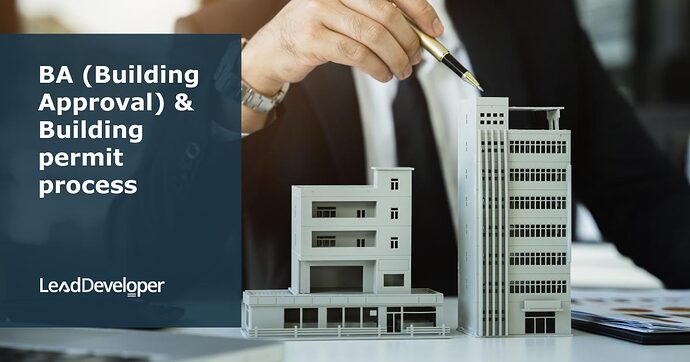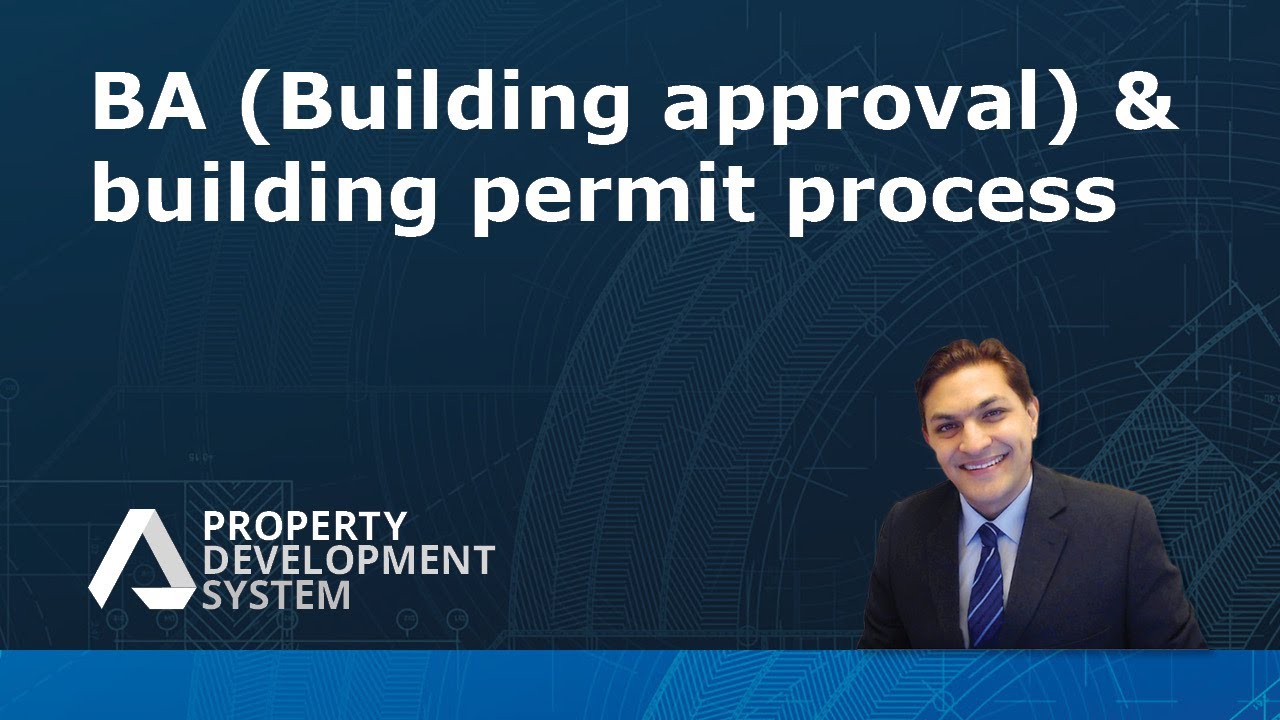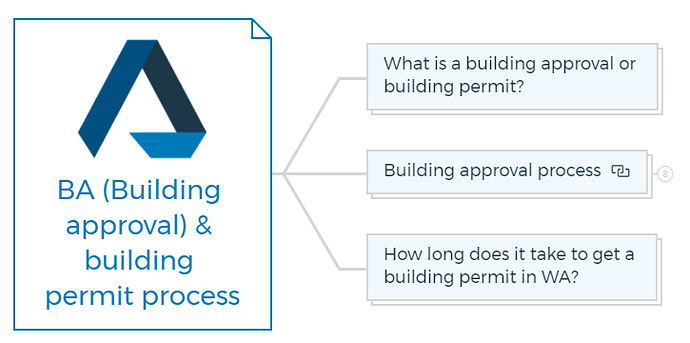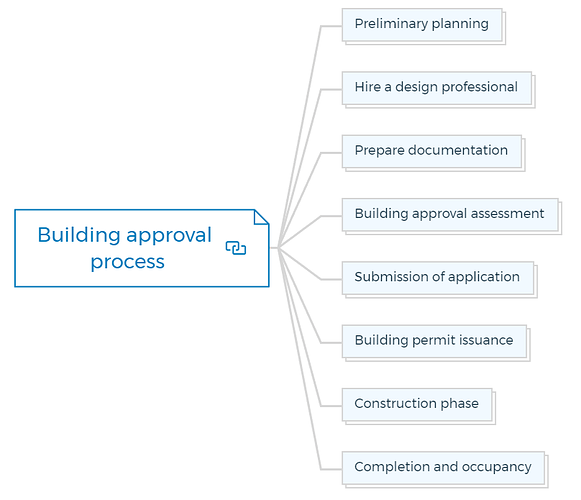BA (Building Approval) & Building Permit Process
Before embarking on any construction project, it is crucial to understand the processes involved in obtaining building approval or a building permit. These two aspects play a significant role in ensuring that your project complies with all applicable regulations and meets the necessary safety standards.
What is a building approval or building permit?
Local authorities approve construction plans and designs to ensure compliance with building laws, zoning regulations, and safety standards. Building permits require building permission.
A building permit authorises the construction and alteration of buildings by assessing any proposed new buildings, structures or alteration work against the requirements of the Building Code of Australia.
The Council or the private building surveyor usually issues building permits or building approvals.
A building permit is an official piece of paper issued before the construction or development begins. The permit is evidence that ensures that the development meets at least the minimum requirements concerning the health, safety, and amenity of the owner and the general neighbouring public.
Learn More
The building is concerned with safe construction practices and considers whether the construction work conforms to the building regulations, the Building Code of Australia, and relevant Australian standards.
When assessing the building plan application, the experts consider whether the structure is correctly designed. They also ensure that the structure has adequate drainage, fire safety measures, and pest protection.
You should note that an inspection will be required during the building process to confirm the structure’s status. This building permit or building approval emphasises the details of the project.
For instance, it includes all the drawings that we have discussed before, such as:
- Electrical
- Landscape
- Hydraulics
- Plumbing
- Joinery Drawings
- Interior Specifications
- Landscape Drawings
Moreover, building approvals require assessment per the Building Code of Australia and the National Construction Code (NCC), along with the building and plumbing regulations.
These codes and regulations highlight issues such as whether the building:
- Is designed and constructed soundly and will be safe
- Has an appropriate degree of fire safety
- Has adequate protection from pests
- Has adequate sewage and drain lines (operating smoothly)
- Meets the minimum energy and water efficiency standards
Building approval process
To obtain a building permit in Australia, you need to follow the process outlined below:
Preliminary planning
- Define your construction project.
- Learn your local building codes, restrictions, and standards. Australian states and territories may vary.
Hire a design professional
- Design your project with a certified architect, engineer, or building designer.
- Make sure the designer knows local construction codes.
Learn More
Prepare documentation
- Complete the necessary application forms provided by the local building authority.
- Include project details, property information, design plans, and any supporting documents required.
Building approval assessment
The Building Permit process first involves the assessment of a proposed building or structure against the Building Code of Australia.
You will need to submit detailed construction plans to an accredited building surveyor/certifier, either a private operator or one employed by the Council.
- The building authority will review and assess the submitted plans and documentation for compliance with building codes, safety standards, and zoning regulations.
- They may consult with various departments or agencies to gather input and ensure the proposed project aligns with their respective requirements.
- The assessment process may take several weeks or months, depending on the project’s complexity and the authority’s workload.
Submission of application
The process of obtaining a Building Permit begins with an Application Form, which covers the following:
- Property details
- Owner’s information
- Building Practitioners taking part in the project
- Nature of building works
- Estimation of the cost of works
Along with the application form, you may also require the following (this differs depending on the scope of work and the nature of property development):
- Site plan with full site location, all boundaries, easements, and any existing buildings to be visible
- Structural drawings, including a detailed floor plan and elevation
- Just as the size and scope of every building project vary, the process of obtaining a Building Permit can also change.
Building permit issuance
- The building authority will send a written letter of approval and any conditions or revisions.
- Get a building permit with the approval notice.
- Fill out the paperwork, pay the permit fees, and submit land surveys, utility approvals, and environmental impact assessments.
Learn More
Construction phase
- Building authority inspectors will check designs, safety requirements, and building codes throughout construction.
- Foundation, frame, electrical, plumbing, and final inspections are possible.
- If construction requires changes to authorised plans, get building authority approval.
Completion and occupancy
- Request a building authority inspection after construction.
- This inspection verifies the building meets safety and plan criteria.
- If the inspection passes, the building authority will issue a Certificate of Occupancy.
Once all relevant documents are provided, a Building Permit can be issued immediately, and your project can commence.
How long does it take to get a building permit in WA?
The intricacy of the project, the workload of the local building authority, and the thoroughness of your application can affect the time it takes to get a building permit in Western Australia (WA). Building permits in WA might take weeks to months to process.
Simple projects can get a building permit in 2–4 weeks. Projects that comply with all requirements, have thorough and correct documentation and do not require significant reviews or consultations are eligible.
Multi-story buildings, commercial developments, and property development projects that require additional studies or interactions with numerous departments or organisations can take longer to process.
Review, coordination, and compliance with regulations and standards may take longer for these projects. Such processing can take months.
The local building authority’s workload and application backlog might also affect processing time. Peak periods or large application volumes may increase processing time.
Test Your Knowledge
Practical Exercise: Navigating the Building Approval and Permit Process
Objective:
To understand the process of obtaining a building approval or permit, the roles of different entities involved, and the compliance requirements with the Building Code of Australia (BCA), National Construction Code (NCC), and local regulations.
Part 1: Preliminary Planning
To Do:
- Choose a hypothetical construction project. Describe the type of structure, its purpose, and its location within Australia.
- Research and list the local building codes, restrictions, and standards that would apply to your chosen project. Note any variations in requirements among different states or territories if applicable.
Research Question:
- How do the Building Code of Australia and the National Construction Code influence the preliminary planning of a construction project?
Part 2: Design and Documentation
To Do:
- Simulate hiring a design professional for your project. Create a brief profile of your chosen professional, including their qualifications and why they are suited to your project.
- Prepare a simplified version of the necessary documentation for a building permit application. This should include a site plan, structural drawings, and a brief description of the environmental impact assessments you would need.
Research Question:
- What roles do architects, engineers, and building designers play in ensuring compliance with local construction codes?
Part 3: Building Approval Assessment
To Do:
- Draft a mock submission to a local building authority or private building surveyor for your project. Include property details, owner information, building practitioners involved, the nature of the building works, and an estimated cost of works.
- Create a checklist of all assessments and consultations that might be required for your project based on its complexity and location.
Research Question:
- What are the most common reasons for delays in the building approval assessment process, and how can they be mitigated?
Part 4: Building Permit Issuance and Construction Phase
To Do:
- Write a response to a hypothetical approval letter from the building authority, including any conditions or revisions mentioned.
- Outline the steps you would take during the construction phase to ensure ongoing compliance with the building permit, including handling changes to authorized plans.
Research Question:
- Discuss the importance of inspections during the construction phase. What key aspects are inspectors looking for to ensure compliance?
Part 5: Completion, Occupancy, and Reflection
To Do:
- Describe the process of obtaining a Certificate of Occupancy upon project completion. What documents and inspections are typically required?
- Reflect on the entire building approval and permit process. Identify any potential challenges or areas of concern that developers might face and propose solutions or best practices to address them.
Research Question:
- How does the building approval and permit process vary across different Australian jurisdictions, and what impact does this have on national construction projects?
Submission Guidelines:
- Compile your responses, research findings, and documentation into a comprehensive report.
- Ensure that each part of the assignment is clearly labelled and organised for easy reference.
- Cite all sources of information, including local building codes and standards, articles, and official documents used in your research.





